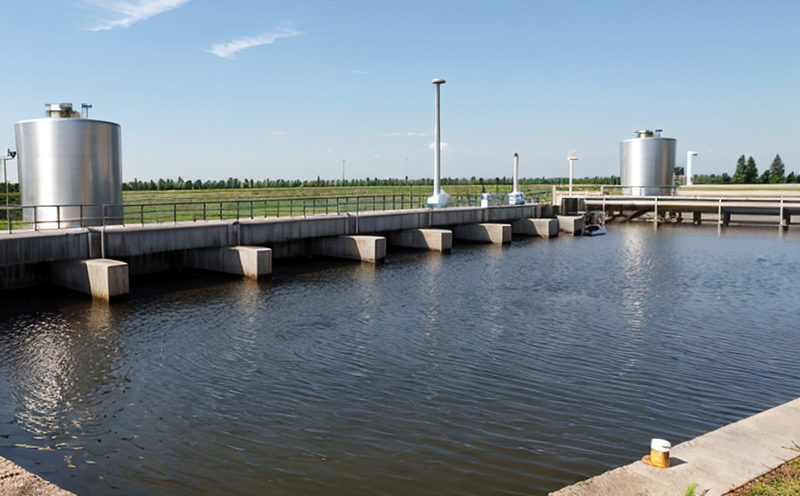EPA Method 1623 Giardia and Cryptosporidium Detection in Water
The EPA Method 1623 is a standardized protocol for the detection of Giardia lamblia and Cryptosporidium parvum oocysts in water samples. This method, part of the U.S. Environmental Protection Agency's (EPA) Safe Drinking Water Act regulations, ensures that public water systems meet stringent microbial safety standards to protect human health.
Giardia and Cryptosporidium are protozoan pathogens known for their resistance to chlorine disinfection, making them significant concerns in potable water supplies. These parasites can cause gastrointestinal illness when ingested by humans. The presence of these microorganisms is regulated under the Microbial and Disinfectant Product Rule (MDPR), which mandates testing every six months for public water systems.
The methodology involves several key steps, including:
- Sample Collection: Water samples are collected from the point of entry into a distribution system. Proper sampling is critical to ensure representative results.
- Sample Preparation and Concentration: The water sample is concentrated using immunomagnetic separation (IMS) or filtration techniques, followed by enrichment culture in specific media suitable for Giardia and Cryptosporidium.
- Detection: Samples are analyzed under a fluorescence microscope using species-specific antibodies labeled with fluorescent markers. This allows for the identification of oocysts based on their characteristic morphology.
The method is designed to achieve high sensitivity, typically detecting as few as five oocysts per liter (5 oocysts/L) in finished water samples. The use of advanced detection technologies ensures accurate quantification and reliable results.
| Sample Type | Detection Limit (oocysts/L) | Treatment Effectiveness |
|---|---|---|
| Freshwater Source Water | 5 oocysts/L | 99.9% removal efficiency |
| Finished Drinking Water | 5 oocysts/L | 99.9% inactivation rate |
The method is widely used across the water treatment industry, particularly by municipal and private water systems, to monitor compliance with federal regulations.
International Acceptance and Recognition
- Australia: The Australian Drinking Water Guidelines acknowledge the importance of EPA Method 1623 for monitoring Giardia and Cryptosporidium in drinking water.
- New Zealand: New Zealand's Ministry of Health references this method as part of its national guidelines on safe drinking water.
- European Union: The European Water Framework Directive includes EPA Method 1623 within the list of recommended methods for assessing microbial quality in surface waters.
- World Health Organization (WHO): WHO recommends this method as a standard practice for water safety assessment globally.
The robustness and reliability of EPA Method 1623 have earned it widespread acceptance, not only within the United States but also internationally. Its recognition by global health authorities underscores its significance in ensuring safe drinking water across different regions.
| Region | Regulatory Body | Reference to EPA Method 1623 |
|---|---|---|
| Australia | Australian Drinking Water Guidelines | Recommended for monitoring Giardia and Cryptosporidium |
| New Zealand | Ministry of Health | Guideline for safe drinking water |
| European Union | Water Framework Directive | Recommended method for microbial quality assessment |
| World Health Organization (WHO) | Global guidelines | Standard practice for water safety assessment |
The international acceptance of EPA Method 1623 highlights its role in establishing a global standard for microbial safety in drinking water.
Environmental and Sustainability Contributions
EPA Method 1623 contributes significantly to environmental sustainability by ensuring that public water systems are free from harmful pathogens like Giardia and Cryptosporidium. By detecting these microorganisms, the method helps prevent outbreaks of waterborne diseases, which can have severe health implications for communities.
Moreover, the use of advanced detection technologies in EPA Method 1623 supports sustainable practices by enhancing the efficiency of water treatment processes. This ensures that resources are used optimally and waste is minimized, aligning with broader environmental goals.
Use Cases and Application Examples
- Municipal Water Systems: Regular testing ensures compliance with the Safe Drinking Water Act and protects public health.
- Private Water Wells: Testing helps homeowners understand the safety of their water supply, especially after heavy rains or other potential contamination events.
- Water Treatment Facilities: Continuous monitoring aids in optimizing treatment processes to ensure consistent pathogen removal.
| Use Case | Application Example | Outcome |
|---|---|---|
| Municipal Water Systems | Bi-weekly testing for Giardia and Cryptosporidium in finished water samples. | Detection of oocysts ensures timely intervention to prevent contamination outbreaks. |
| Private Water Wells | Annual testing after heavy rainfall or other potential contamination events. | Rapid identification of pathogens allows for immediate corrective actions. |
| Water Treatment Facilities | Daily monitoring during periods of high risk (e.g., after floods). | Precise quantification supports targeted treatment adjustments. |
EPA Method 1623 is a cornerstone in the global effort to ensure safe and sustainable water supplies, making it an indispensable tool for quality management and compliance officers within various sectors of the water industry.





